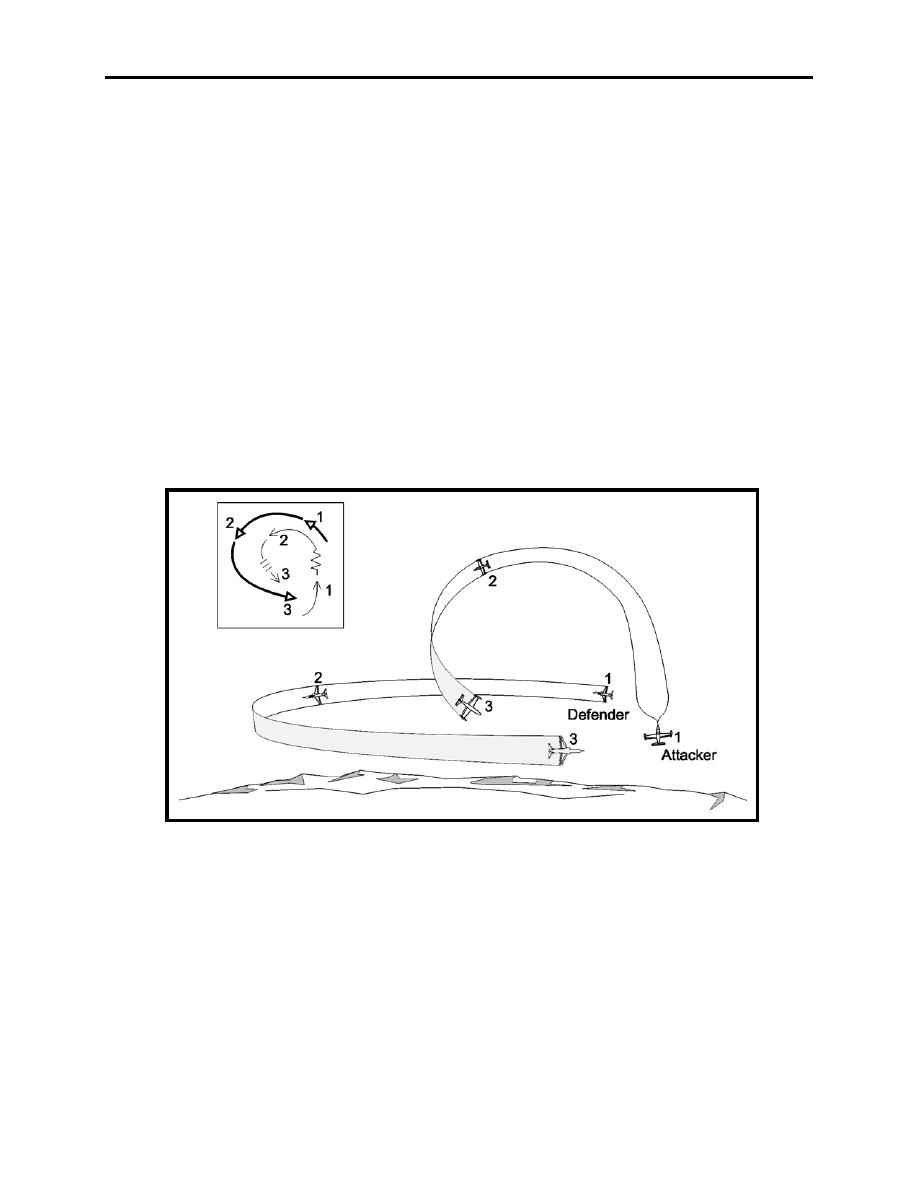 |
|||
|
|
|||
|
|
|||
| ||||||||||
|
|  CHAPTER TEN
BASIC FIGHTER MANEUVERS (BFM)
slow the closure on the bogey's flight path. The out-of-plane maneuvering will place the nose of
the fighter above the plane of attack and exchange airspeed for altitude. The combination of the
out-of-plane maneuvering and the slower airspeed will allow the fighter to turn with a smaller
radius while aligning fuselages. The fighter's slower airspeed will also reduce the closure rate
allowing you to maintain or increase range. An alternative to the high yo yo would be to pull
power and pop the speedbrakes. Although a viable alternative, this will deplete your energy
package and may reduce or eliminate your offensive advantage.
The high yo yo is performed by reducing the angle-of-bank in relation to the defender's flight
path while pulling the nose up out of the defender's plane of flight. The nose is positioned
sufficiently high to prevent the overshoot, but not so high as to allow the defender to dive away
for separation. The severity of the pull-up and final nose position is dictated by the rate of
closure (Figure 10-15).
By converting airspeed to altitude and utilizing radial "G" to control closure and angle-off, the
offensive fighter is able to maintain its position and energy advantage. If the high yo yo is
performed correctly, it is extremely difficult to counter.
Figure 10-15 High Yo Yo
Low Yo Yo
The low yo yo is a lead pursuit maneuver, designed to decrease range by increasing closure rate.
The low yo yo is used to close on a bogey in order to reach an appropriate weapons envelope. A
low yo yo is usually employed when the attacker is in a low closure or low angle-off situation. A
low yo yo is accomplished by flying inside the bogey's turn while descending below the target's
plane-of-motion (Figure 10-16).
10-32
BASIC FIGHTER MANEUVERS (BFM)
|
|
Privacy Statement - Press Release - Copyright Information. - Contact Us |